One historian traced Queen Charlotte's ancestry to a Moorish mistress through six different bloodlines.
Queen Charlotte was a queen of all trades — a botanist, lover of music and the arts, and a founder of many orphanages — but the most intriguing part of her story is her much-scrutinized bloodline.
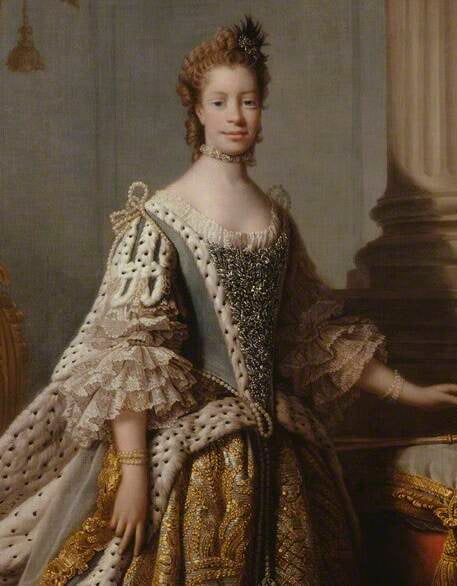
Wikimedia CommonsThe queen’s portrait by Allan Ramsay, who was a known abolitionist.
Some historians believe she possessed African ancestry, descended from a Portuguese royal and his Moorish mistress. If true, it would make Queen Charlotte of Mecklenburg-Strelitz, the mother of two British kings and the grandmother of Queen Victoria, the British Royal Family’s first multiracial member.
From Princess Sophia To Queen Charlotte
Queen Charlotte was born a German princess far away from the British crown. She came into the world on May 19, 1744, as Sophia Charlotte of Mecklenburg-Strelitz, a northern German territory that at the time was part of the Holy Roman Empire.
In 1761, when she turned 17, Princess Sophia was betrothed — rather unexpectedly — to the King of England, George III. Her brother Adolf Frederick IV, who assumed their late father’s position as Duke of Mecklenburg-Strelitz, signed off on Charlotte’s marriage contract with the British king.
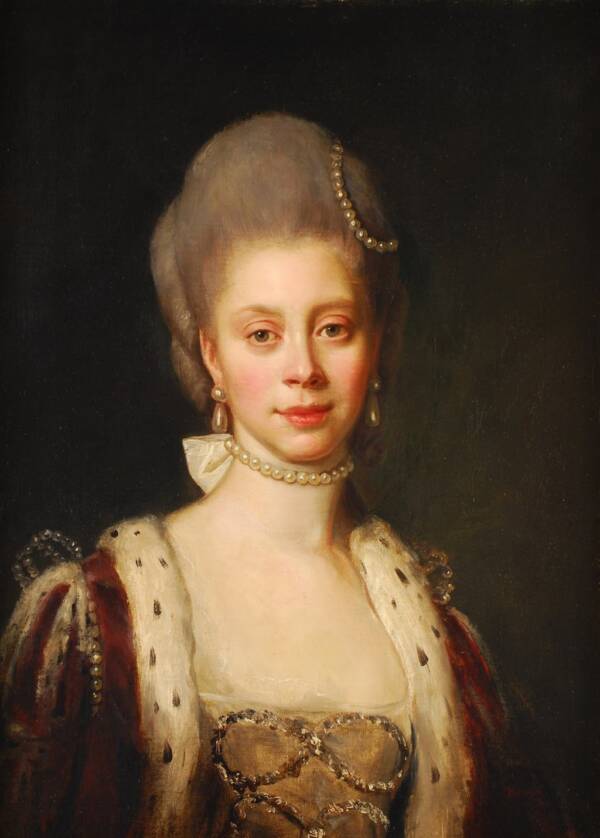
Wikimedia CommonsBefore she became queen of England, she was princess of a tiny German municipality known as Mecklenburg-Strelitz.
While the couple had never before met, Princess Sophia was deemed to be the perfect match for the British heir.
She was well-educated and of suitable stock, and the relative insignificance of her home territory indicated she was probably uninterested in engaging in British affairs. In fact, one of the conditions stated in their royal marriage contract was that she was to never ever meddle in politics.
After three days of celebrations, Princess Sophia departed Germany escorted by the Earl of Harcourt, the head of the royal delegation that had been sent to bring the new queen to England. The vessel carrying the royal party was ceremoniously renamed The Royal Charlotte in her honor and set sail across the seas.

King George III was 22 when he chose to marry Sophia Charlotte, who was 17 at the time.
After a nine-day voyage plagued by bad weather, Princess Sophia’s ship finally arrived in London on Sept. 8, 1761, and suddenly the once-obscure princess was on all of England’s minds and lips.
“The date of my promise is now arrived, and I fulfill it — fulfill it with great satisfaction, for the Queen is come,” wrote politician Horace Walpole in a letter describing Charlotte’s arrival in London. “In half an hour, one heard of nothing but proclamations of her beauty: everybody was content, everybody pleased.”
She and George III — who had never met before then — were wed that same night at St James’s Palace; he was 22 and she was 17.
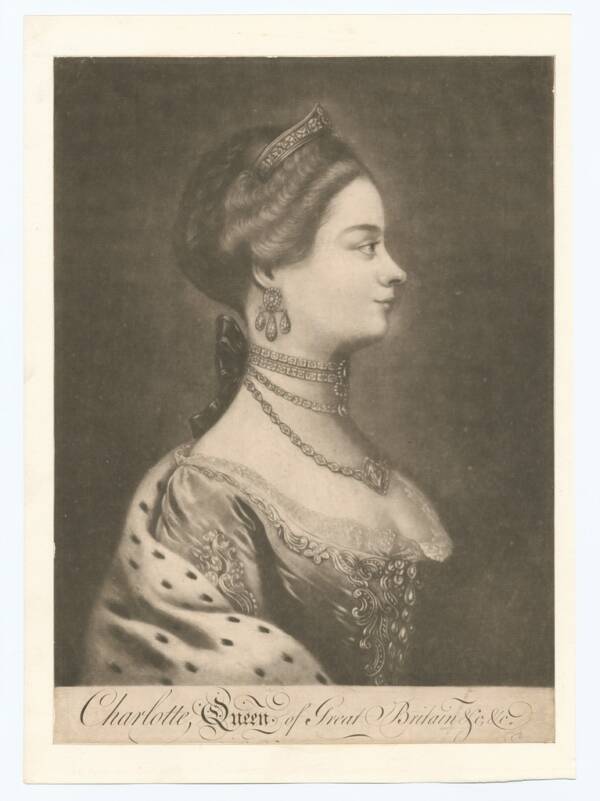
New York Public LibraryQueen Charlotte was interested in various subjects, particularly the arts, botany, and philanthropy.
After the royal coronation a few weeks later, Princess Sophia officially became Queen Charlotte. Eager to assume her royal duties, Queen Charlotte, who spoke French and German, threw herself into studying English. She hired both German and English staff for her ladies-in-waiting cohort and even adopted the very English tradition of drinking tea.
But her good intentions were not received kindly by some in the royal court, particularly by her own mother-in-law, Princess Augusta, who continuously tried to overpower Queen Charlotte’s status as the queen mother.
On August 12, 1762, less than a year after her marriage to the king, Queen Charlotte gave birth to their first child, George the Prince of Wales. Her first son would later become King George IV and was said to be Queen Charlotte’s favorite among her 15 children — 13 of which miraculously survived into adulthood.
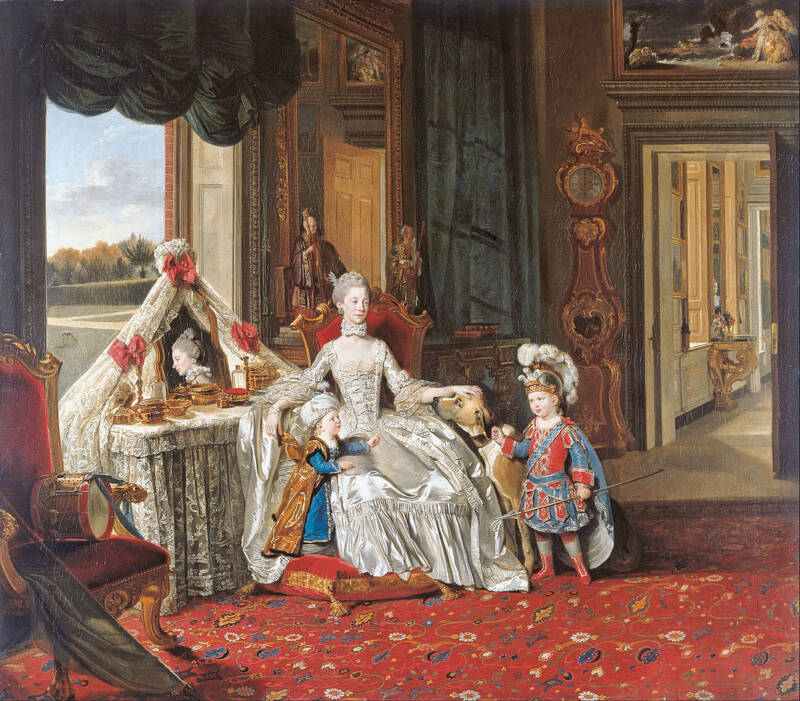
Wikimedia CommonsQueen Charlotte with her two eldest children. Later, 13 out of the 15 children she birthed would survive into adulthood.
Although the queen dutifully carried out her obligation to bear heirs to the royal throne, being constantly pregnant for almost 20 years of her life did take its toll. She kept mum about her feelings in public but shared them privately with her closest confidants.
“I don’t think a prisoner could wish more ardently for his liberty than I wish to be rid of my burden and see the end of my campaign. I would be happy if I knew this was the last time,” she wrote in a 1780 letter while pregnant with her 14th child, Prince Alfred.
Regardless of the pains of motherhood, Queen Charlotte’s arranged marriage to King George III is heralded as a success story by historians because of the couple’s obvious affection for each other — evidenced by letters exchanged between the couple during their rare moments of separation. Take, for instance, this April 26, 1778 letter she wrote to her husband nearly 17 years into their marriage:
You will have the benefit by Your voyages to put Spirit in every Body, to be more known by the World, and if Possible more beloved by the People in general. That must be the case, but not equal to the love of her who subscribes herself Your very Affectionate Friend and Wife Charlotte
A Patron Of The Arts, Science, And Philanthropy

Wikimedia CommonsThe king and queen with their children.
In 1762, King George III and Queen Charlotte moved into a property that the king had recently acquired called Buckingham House. It was comfortable and spacious, meant as a getaway spot for his queen. All her children except her first son were born at the estate, later affectionately known as “The Queen’s House.” Today, the expanded-upon house is Buckingham Palace, the royal residence of the Queen of England.
While Queen Charlotte may have endeavored to keep her nose out of royal matters as best as she could, there was no denying her intelligence and interest in European affairs. She mostly shared her thoughts with her beloved brother, the Grand Duke Charles II.
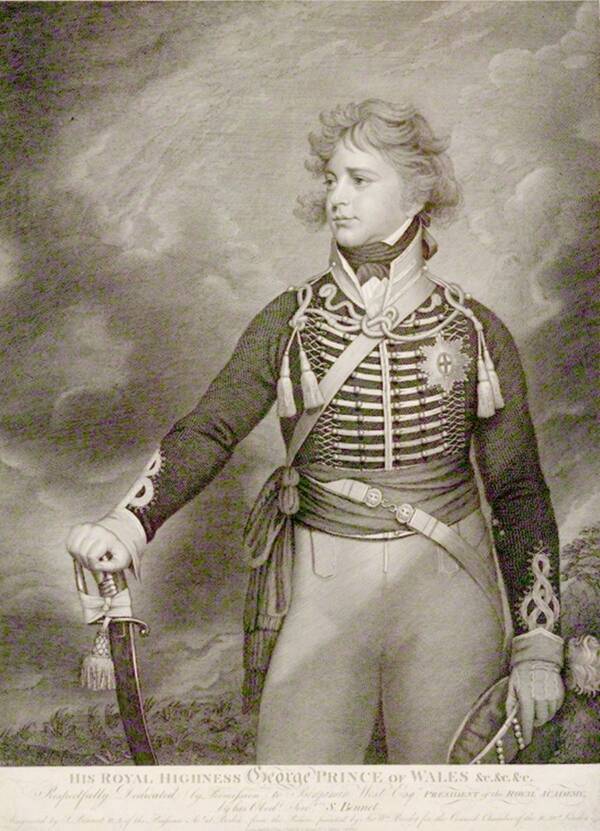
Wikimedia CommonsQueen Charlotte was particularly fond of her eldest offspring, George IV, who became king after his father’s death.
Queen Charlotte wrote to the duke about developments from the empire’s American colonies, which had begun to revolt under her husband’s reign:
“Dearest brother and friend…About America I know nothing, we are still where we were before, that means, without news; the whole affair is so interesting that it has taken hold of me entirely. To give you an idea of the stubbornness of these people and the degree of their spirit of rebellion, one need no other example to make a point than the Quakers of Pensilvania. They fell in with the party, they are also without arms & like their religion object to sermons, & consequently to submitting to any law. They have no leader, but their military course and their actions are ruled by inspiration as in their private lives.”
She was very fond of her younger brother and wrote more than 400 letters to him in which she conveyed her musings about British politics and other intimate aspects of her life in the palace.
Besides politics, both wife and husband had an affinity for plants. The palace grounds of St. James’s Palace, which was the official residence of the king and queen at the time, resembled farmland, as they were constantly covered in vegetable plots.
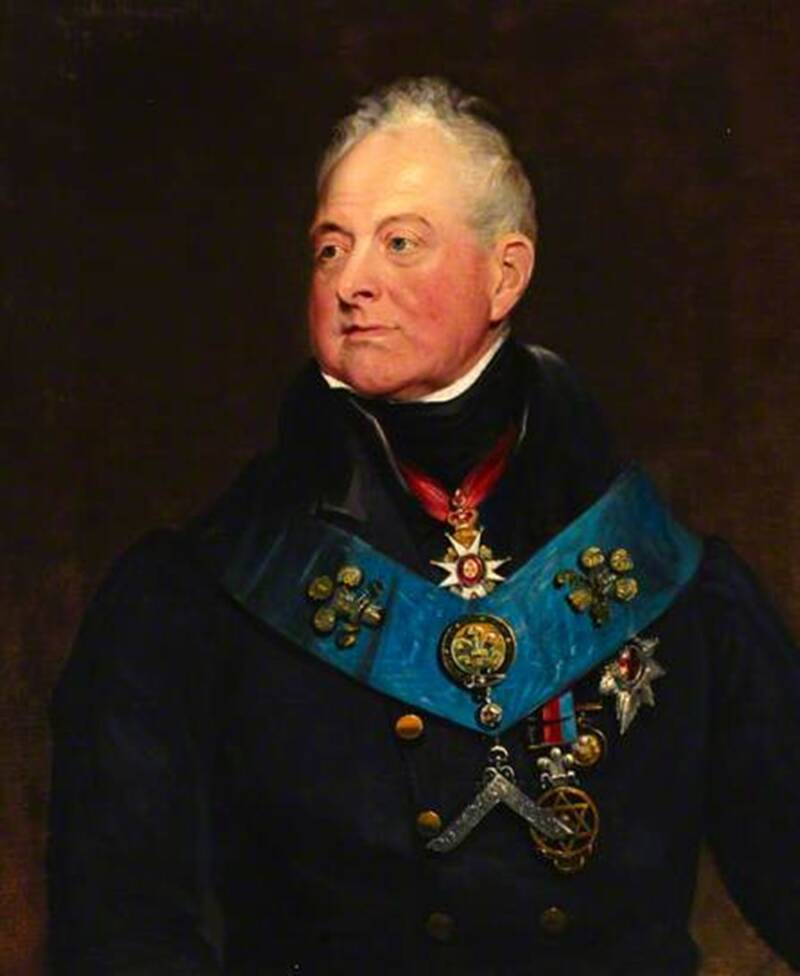
Wikimedia CommonsQueen Charlotte’s son, William IV, would also later assume Britain’s throne after his older brother’s death.
Queen Charlotte’s fondness for flora became known to many of her famous explorer subjects, such as Captain James Cook, who showered her with gifts of exotic plants which she placed in her gardens at Kew Palace.
Queen Charlotte was also a patron of the arts and had a soft spot for German composers like Handel and Johann Sebastian Bach. The queen’s music-master was Johann Christian Bach, the eleventh son of the great composer. She is also credited with the discovery of another young artist, an eight-year-old Wolfgang Amadeus Mozart, whom she welcomed into the palace during his family’s visit to England from 1764 to 1765.
Later, Mozart dedicated his Opus 3 to Queen Charlotte, with the following note:
“Filled with pride and joy at daring to offer you a tribute, I was finishing up these sonatas to be laid at the feet of your Majesty; I was, I confess, drunk with vanity and thrilled with myself, when I spied the Genius of Music at my side.”
She shared her love of the arts with another notorious queen, Marie Antoinette of France. The French queen confided in Queen Charlotte about the turmoil of her French court as the French Revolution began. The sympathetic Queen Charlotte even prepared rooms for the French monarchs to come to Britain but Marie Antoinette’s journey never materialized.
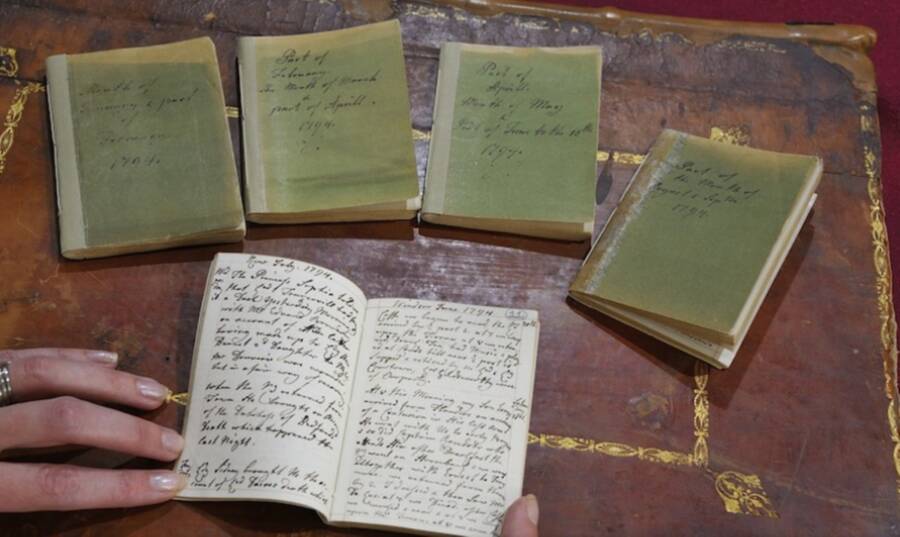
Royal Collection TrustQueen Charlotte’s journals.
Most importantly, though, was the queen’s special interest in giving back to the needy. Queen Charlotte founded many orphanages and, in 1809, became the patron of London’s General Lying-in Hospital, one of Britain’s first maternity hospitals. The hospital was later renamed the Queen Charlotte’s and Chelsea Hospital in honor of the queen’s continued support.
Indeed, Queen Charlotte’s influence was greater than the attention the history books give her name, evidenced by her legacy which can be found in place and street names across North America. Among them are Charlottetown, Prince Edward Island, as well as the city of Charlotte in North Carolina, which boasts the nickname the “Queen’s City.”
“We think [Queen Charlotte] speaks to us on lots of levels,” said Cheryl Palmer, educational director of Charlotte, North Carolina’s Mint Museum. “As a woman, an immigrant, a person who may have had African forebears, botanist, a queen who opposed slavery — she speaks to Americans, especially in a city in the south like Charlotte that is trying to redefine itself.”
Was Queen Charlotte The First Black Queen?
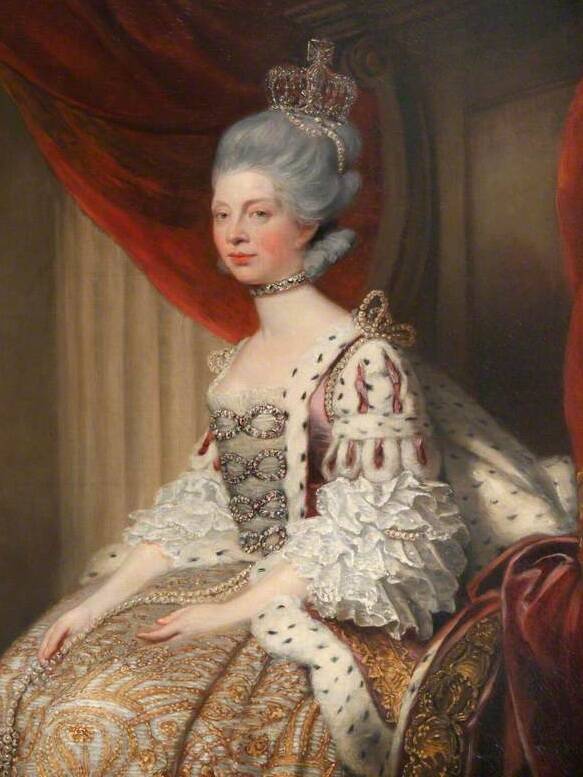
Wikimedia CommonsSome historians believe that certain artists whitewashed their portraits of Queen Charlotte to comply with beauty standards of the time.
It’s no secret that European royals, including those who ruled over Great Britain and especially those in the 18th century and earlier, attempted to protect their royal “purity” by only marrying other royals. Which is why Queen Charlotte’s ancestry has piqued so much interest.
According to historian Mario de Valdes y Cocom — who dug into the queen’s lineage for a 1996 Frontline documentary on PBS — Queen Charlotte could trace her lineage back to Black members of the Portuguese royal family. De Valdes y Cocom believes that Queen Charlotte, known as a German princess, was actually directly related to Margarita de Castro y Sousa, a 15th-century Portuguese noblewoman nine generations removed.
Margarita de Castro e Souza herself descended from King Alfonso III of Portugal and his concubine, Madragana, a Moor that Alfonso III took as his lover after conquering the town of Faro in southern Portugal.
This would make Queen Charlotte a whopping 15 generations removed from her closest Black ancestor — if Madragana was even Black, which historians don’t know. Although, de Valdes y Cocom has said that, due to centuries-long inbreeding, he could trace six lines between Queen Charlotte and Sousa.
But according to Ania Loomba, a professor of race and colonialism at the University of Pennsylvania, the term “Blackamoor” was mainly used to describe Muslims.
“It didn’t mean black necessarily,” Loomba explained.
But even though Queen Charlotte may not have possessed close genealogical ties to Africa, she may have still been perceived as a descendant of African people.

Wikimedia CommonsAllan Ramsay’s portraits of Queen Charlotte may have been the most realistic, accentuating her non-lily-white features.
Baron Christian Friedrich Stockmar, the royal physician, described Charlotte as “small and crooked, with a true Mulatto face.” There was also the unflattering description by Sir Walter Scott, who wrote that she was “ill-colored.” One prime minister even went as far as saying that her nose was “too wide” and her lips “too thick.”
Supporters of this theory also point to the royal portraits of the queen, some of which depict her African features quite strongly. Queen Charlotte’s most striking likenesses were painted by Allan Ramsay, a prominent artist and staunch abolitionist.
Desmond Shawe-Taylor, a surveyor of the Queen’s pictures, believes that the theory of Queen Charlotte’s ancestry isn’t supported by Ramsay’s portraits.
“I can’t see it to be honest,” Shawe-Taylor said. He added that most portraits of the queen depict her as your typical light-skinned royal with no inkling of African blood.
“None of them shows her as African, and you’d suspect they would if she was visibly of African descent. You’d expect they would have a field day if she was,” Shawe-Taylor argued.
But that reasoning is also questionable, given that painters didn’t always truthfully depict their royal subjects back in the 18th century and prior. Indeed, artists typically erased features that were deemed undesirable at the time. As African people were associated with slavery, painting Britain’s queen as someone from Africa would have been taboo.
De Valdes y Cocom says the case is different with Ramsay. Because Ramsay was known to paint with more accuracy than most artists and he was a supporter of abolishing slavery, de Valdes y Cocom suggests that the artist would not have suppressed any “African characteristics” of Queen Charlotte — instead he might have actually emphasized them for political reasons.
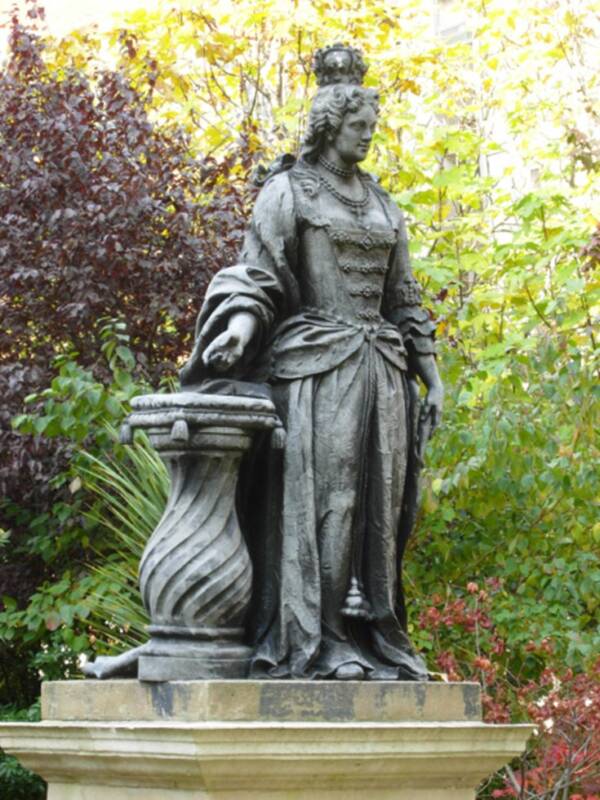
GeographMany places in the United States have been named in honor of Queen Charlotte of Mecklenburg-Strelitz.
The topic of race is always a sensitive one, even when it is a discussion grounded in historical reality. Given the British empire’s colonial history, having a royal member of African ancestry would be a stunning revelation. But also, not so impossible.
That discovery carries political weight and is, perhaps, an uncomfortable reminder to some of the destructive colonialism that was necessary to build the British empire. Maybe that is why many British historians remain reluctant to embrace the theory of a queen with African lineage.
But while some historians contend that Queen Charlotte’s heritage isn’t important even if she did have African lineage, there is no denying the significance of what that lineage would symbolize. For centuries, slavery was the law of the land in Britain and its colonies. And many of the enslaved were African or descendants of Africans.
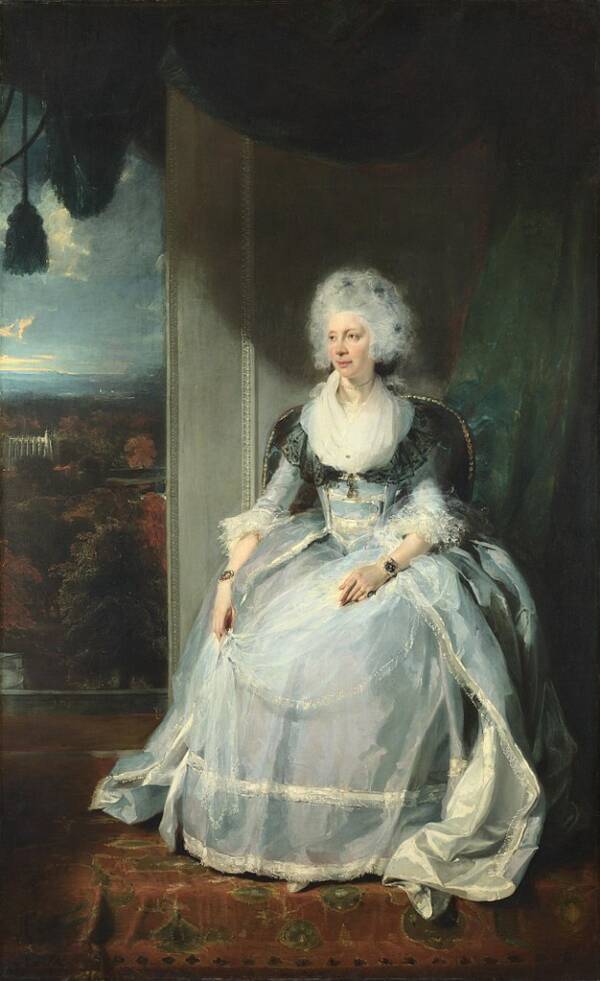
Wikimedia CommonsCharlotte of Mecklenburg-Strelitz was the longest-serving queen consort of Great Britain and Ireland after five decades.
The concept of Charlotte as Britain’s “Black Queen” has been the focus of numerous projects by Black artists, as well as others like U.S.-based artist Ken Aptekar.
“I took my cues from the passionate responses of individuals whom I asked to help me understand what Queen Charlotte represents to them,” he said.
Unfortunately, Queen Charlotte’s life’s end was far from blissful. After the onset of George III’s permanent “madness” in 1811, she grew temperamental — likely from the stress of her husband’s un-diagnosed mental condition — and even fought publicly with her son over her right to the crown.
The queen died on Nov. 17, 1818, and was buried at St George’s Chapel in Windsor Castle. She was the longest-serving royal consort in British history, having served in that position for more than 50 years.
Now that you’ve learned about Queen Charlotte of Mecklenburg-Strelitz and her disputed lineage, read about another famous queen, Mary, Queen of Scots. Then, learn how King Henry VI’s courtiers helped him and his wife, Queen Margaret, have sex and procreate.






